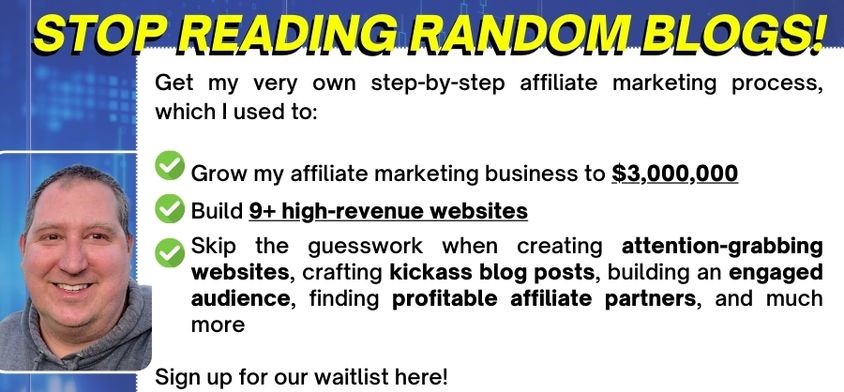In the world of search engine optimization (SEO), there are some practices that feel unsavory even though they are actually valid. Link cloaking sounds devious and, when you do it, even feels a little devious. The truth is that link cloaking is a great way to improve your search rank, protect your website, and make things a little neater. Here is what link cloaking is along with several reasons that you should put it into practice on your website and in your emails.
- Not very technical but want to start an online business? Give this amazingly awesome service a try!
What Is Link Cloaking?
Simply put, link cloaking takes a link and rearranges it or replaces it so that it looks different to the human eye and to software (e.g. search engines, spam blockers, etc.). A great example of link cloaking is the very popular TinyURL application. TinyURL takes a long link and creates a shorter redirect link that is easier to use and simpler to remember. Link cloaking is, in essence, the practice of hiding (obfuscating) the actual text of a link.
The most common form of link cloaking is on individual websites where a third-party link is made to look like it points to another page on the site. This is a very common practice with affiliate links, but it can be useful for a number of reasons. Here are several reasons for engaging in the practice of link cloaking.
The #1 Reason to Use Link Cloaking
Perhaps the most compelling reason to use link cloaking is to prevent the passing of link juice. This isn’t all that dissimilar, in practice, from using the rel=”nofollow” attribute and value in HTML. Remember that link juice is a reference to link points and how they affect your search rankings. When you link out to a website, you lose a little link juice. When a website links to you, you gain link juice. The more link juice you have, the better your PageRank and hence your search engine rank.
URL shortening software products, like TinyURL, use 302 redirects, which are temporary redirects. Most search engines will discount such links and therefore won’t transfer any link juice from your site when they come across them. This practice is particularly useful for affiliate links because it solves two problems in one step. The first problem is that you don’t want to transfer your link juice to your affiliate. The second problem that link cloaking solves revolves around customers who read your affiliate links and then bypass them. This latter problem is discussed in the next section.
Obscuring Links to Prevent Bypassing
There is some fear among webmasters that consumers are beginning to bypass affiliate links and instead go to the merchant site directly. The thought is that consumers see the address of a link on an webpage and that rather than just click and follow, they choose instead to copy and paste the link into their browsers. When consumers do this, your webpage doesn’t get credit for the sale and you don’t make a commission.
There is some evidence to suggest that consumers actually do bypass affiliate links. When consumers see an affiliate link within text, they tend to feel as though they are being marketed to, something that people seem to resent in links but tolerate through other media, like television. If, however, people simply click on a cloaked link and end up on a marketing page, they tend to feel like they simply followed a path and ended up at a merchant. It’s an odd bit of human psychology, but it happens.
Aesthetics
Believe it or not, aesthetics and the appearance of a link can have an impact on whether or not people follow it. The problem appears to arise from two separate issues. First, consumers associate convoluted links with spam. The longer a link is and the more difficult it is to read, the “spammier” it feels and the less likely people are to click on it.
Perhaps more important than the “spammy” feel of convoluted links is the fact that cloaked links appear as though they are a part of your website rather than third-party redirects. People prefer to stay within a site and not be bounced around the Internet by links. The cleaner appearance of cloaked links also helps to improve the appearance of the content on your website.
Email Delivery
If you are putting affiliate links inside of emails, keep in mind that they are likely to land your messages in a spam folder. Anything dealing with sales or marketing has a higher chance of being categorized as spam. This is especially true thanks to overzealous affiliate email marketers who have managed to spam so many customers that the affiliate program itself gets blacklisted. Don’t let the practices of other derail your program. Use cloaked links within your email communications.
Search Engine Obfuscation
Some SEO experts believe that search engines look for affiliate links and then downgrade PageRank when they find them. Whether or not this is true has been hard to confirm, but given that it is a possibility, you would do well to guard against it. Cloaking links can help to remove affiliate traces from your website, but you should not rely on this practice exclusively. Use the “nofollow” value in your rel attribute and put all affiliate links (cloaked and uncloaked) in your robots.txt file.
Hiding from Hijackers
Some people claim that malware on users’ computers can replace your affiliate code with another affiliate code in order to steal your commission. There is no hard evidence that this claim is true. In fact, some SEO experts believe that it is just hype created by companies who offer link-cloaking software. If this really is a problem, however, cloaking your links can help to prevent it. There are lots of great reasons, discussed above, to cloak links. Hiding from hijackers is just a bonus of link cloaking, not a primary reason to do it.
Beating Ad Blockers
People hate ads, there is no way around that. Unfortunately, the people who seem to hate ads the most are the same people who don’t realize that those ads make it possible for them to browse the vast majority of the Internet for free. To prevent AdBlock Plus and other ad blockers from suppressing your affiliate links, use link cloaking in combination with the practice of not hotlinking from the merchant’s domain (download the banner ad graphic and host it directly on your site instead). Doing both of these things should help you to get around ad blockers.
To Cloak or Not to Cloak
If you feel like link cloaking is a shady practice, remember that there are both legitimate and illegitimate reasons for doing it. Because it is a legitimate practice in many settings, search engines won’t punish you for doing it. Using link cloaking to help organize your links, improve aesthetics, increase email delivery rates, and protect your search ranking. Everything else that comes with link cloaking can be considered a bonus.
Google’s View On Cloaking
Sources
- https://www.jangro.com/link-cloaking/
- https://www.clickscoop.com/9-ways-to-cloak-your-clickbank-hoplinks/
- https://www.geoffreyrickaby.com/web-development/affiliate-link-cloaking-why-you-should-do-it
- https://www.magnet4marketing.net/6-reasons-using-link-cloaking/
- https://www.thehobbyblogger.com/cloak-affiliate-links/


